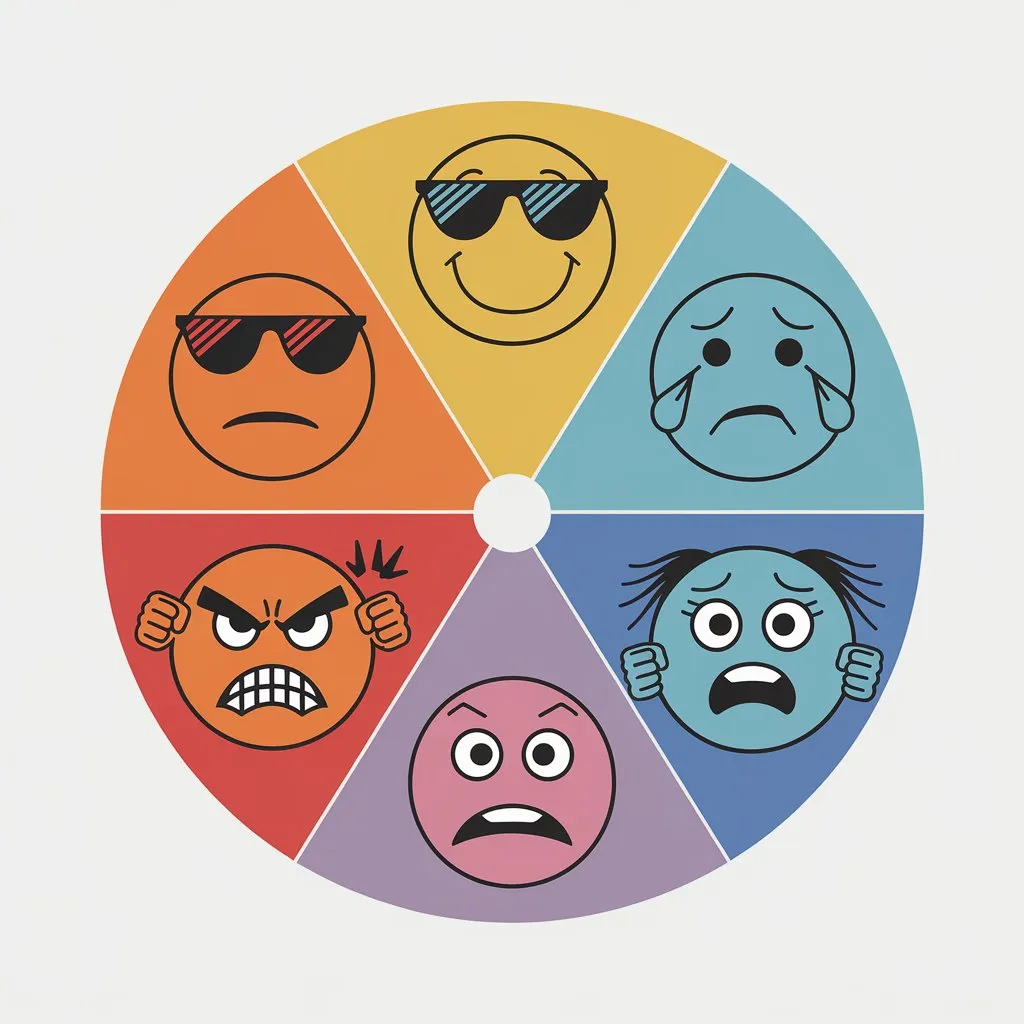How to Stop Emotional Eating: Tips for Stay-at-Home Moms Who Struggle with Stress Eating
As a stay-at-home mom, you’re no stranger to stress. From managing household chores to caring for your little ones 24/7, the pressure can feel overwhelming at times.
It’s no wonder that many of us find ourselves reaching for comfort food when emotions run high. But what if there was a better way to cope with these feelings?
In this article, we’ll explore practical strategies to help you break free from emotional eating and rediscover a healthier relationship with food and yourself.

Fun Fact:
The term “comfort food” was first added to the Oxford English Dictionary in 1997, but the concept has been around much longer!
Table of Contents
Understanding Emotional Eating
Emotional eating is when we use food to soothe our feelings rather than to satisfy physical hunger. It’s that urge to dive into a pint of ice cream after a tough day or munch on chips when feeling lonely.
The tricky part? Emotional hunger can feel a lot like physical hunger, but there are key differences:
- Emotional hunger comes on suddenly; physical hunger builds gradually
- You crave specific comfort foods when eating emotionally
- Emotional eating often leads to feelings of guilt; physical eating doesn’t
Dr. Sarah Johnson, a clinical psychologist specializing in eating behaviors, explains, “Mindful eating is about being present with your food and your body’s signals. It’s a powerful tool in distinguishing between emotional and physical hunger.”
The Science Behind Emotional Eating
Research has shown that stress can significantly impact our eating habits. A study published in the Journal of Health Psychology found that chronic stress was associated with a greater preference for energy- and nutrient-dense foods, particularly those high in sugar and fat.
This preference is likely due to the fact that these foods can temporarily boost mood by triggering the release of dopamine, the “feel-good” neurotransmitter in our brains.

Did You Know?
Did you know that the hormone ghrelin, often called the “hunger hormone,” can be influenced by your sleep patterns? Poor sleep can increase ghrelin levels, potentially leading to increased appetite and emotional eating.
Unique Triggers for Stay-at-Home Moms
As stay-at-home moms, we face unique challenges that can trigger emotional eating:
- Isolation and lack of adult interaction
- Constant demands from children
- Difficulty balancing household responsibilities
- Limited personal time and self-care opportunities
- Financial stress from living on a single income
- Feelings of loss of identity outside of motherhood
Jessica, a mom of two, shares, “I found myself snacking all day long. It was like the kitchen became my escape from the chaos of toddler tantrums and endless laundry piles.”
The Hidden Toll of Chronic Stress
Chronic stress doesn’t just lead to emotional eating; it can have serious health implications.
According to the American Psychological Association, chronic stress can contribute to long-term problems like heart disease, high blood pressure, diabetes, and mental health disorders.
For stay-at-home moms, the constant nature of childcare and household management can create a perfect storm for chronic stress.
Innovative Coping Strategies
Instead of turning to food, try these alternatives:
Mindfulness and Meditation:
- Take 5 deep breaths before reaching for food
- Try a quick body scan meditation to check in with yourself
- Use a mindfulness app for guided sessions (e.g., Headspace, Calm)
Creative Outlets:
- Keep a journal to express your feelings
- Start a small craft project you can pick up during downtime
- Try adult coloring books for stress relief
Pro Tip: Keep a “mood food” diary. For one week, jot down what you eat, when you eat, and how you’re feeling before and after. This can help you identify your emotional eating triggers and patterns.
Physical Activity:
- Do a 10-minute yoga routine (plenty of free videos online!)
- Have a dance party with your kids
- Try high-intensity interval training (HIIT) workouts that can be done in short bursts

The Power of Exercise in Stress Management
Exercise isn’t just good for your physical health; it’s a powerful stress-buster too. A study published in the journal Frontiers in Psychology found that even short bouts of exercise can reduce symptoms of depression and anxiety.
The study suggests that as little as 10 minutes of physical activity per day can have a significant impact on mood and stress levels.
Building a Support System
You’re not alone in this journey. Connect with other moms who understand:
- Join online communities like Facebook groups for stay-at-home moms
- Attend local mom meetups or playgroups
- Consider talking to a therapist or counselor for professional support
- Participate in virtual book clubs or hobby groups
The Importance of Social Connections
Research has consistently shown that strong social connections are crucial for mental health and wellbeing. A study published in the American Journal of Lifestyle Medicine found that social support can buffer against the negative effects of stress and even improve physical health outcomes.
For stay-at-home moms, cultivating these connections can be challenging but incredibly rewarding.

Healthy Eating Habits
Set yourself up for success with these tips:
- Plan and prep meals in advance to avoid impulsive eating
- Keep healthy snacks readily available
- Involve your kids in meal preparation to make it more enjoyable
- Practice portion control using smaller plates
- Stay hydrated – sometimes thirst can be mistaken for hunger
- Aim for balanced meals with protein, complex carbs, and healthy fats
Try this quick and healthy recipe:
Banana Oat Energy Bites
- 1 cup rolled oats
- 1/2 cup mashed banana
- 1/4 cup peanut butter
- 1/4 cup honey
- 1/4 cup mini chocolate chips
Mix all ingredients, roll into balls, and refrigerate. A perfect grab-and-go snack!

The Role of Nutrition in Mood Regulation
What we eat doesn’t just affect our waistlines; it impacts our mood too. A study published in the journal Nutritional Neuroscience found that a diet high in processed foods and sugar was associated with increased odds of depression.
On the other hand, a diet rich in fruits, vegetables, whole grains, and lean proteins were linked to better mental health outcomes.
Mindful Moment: Before your next meal, take three deep breaths and ask yourself, “Am I eating because I’m physically hungry, or am I responding to an emotion?”
Mindful Eating Techniques
Practicing mindful eating can help you reconnect with your body’s hunger and fullness cues:
- Eat without distractions – turn off the TV and put away your phone
- Chew slowly and savor each bite
- Pay attention to the colors, smells, textures, and flavors of your food
- Stop eating when you feel comfortably full, not stuffed
Dr. Lisa Young, a nutritionist and author, advises, “Mindful eating isn’t about perfect eating, but about being present and aware while you eat. It can help reduce overeating and increase satisfaction with meals.”

Emotional Regulation Strategies
Learning to manage your emotions without turning to food is key:
- Practice the HALT method – ask yourself if you’re Hungry, Angry, Lonely, or Tired
- Use a feelings wheel to identify and name your emotions
- Try the 5-4-3-2-1 grounding technique when feeling overwhelmed
- Develop a list of go-to self-care activities for different moods

Craving Buster: If you’re hit with a sudden urge to eat, try the 5-minute rule. Wait 5 minutes before giving in to the craving. Often, the urge will pass on its own.
Setting Realistic Goals
Remember, change doesn’t happen overnight. Set small, achievable goals:
- Start with one mindful meal per day
- Aim for 10 minutes of physical activity daily
- Keep a food and mood journal for a week to identify patterns
- Plan one social activity per week to combat isolation
The Power of Self-Compassion
Be kind to yourself throughout this journey. Dr. Kristin Neff, a leading researcher on self-compassion, states, “Self-compassion involves treating yourself with the same kindness, concern, and support you’d show to a good friend.”
Practice positive self-talk and remember that setbacks are a normal part of any change process.
Self-Care Corner: Remember, taking care of yourself isn’t selfish—it’s necessary. Even 5 minutes of “me time” can help reset your mood and reduce the urge to stress eat.
Conclusion
Breaking the cycle of emotional eating takes time and patience. Remember, it’s about progress, not perfection. By implementing these strategies and building awareness, you’re taking important steps towards a healthier relationship with food and a more balanced life as a stay-at-home mom.
As you embark on this journey, keep in mind that every small change adds up. Celebrate your victories, no matter how small, and don’t be discouraged by setbacks. Your wellbeing matters, not just for you but for your entire family.
We’d love to hear from you! What strategies have you found helpful in managing emotional eating? Share your experiences in the comments below.
Editor’s note: This article provides general information and is not a substitute for professional medical advice. If you’re struggling with disordered eating, please consult a healthcare professional






